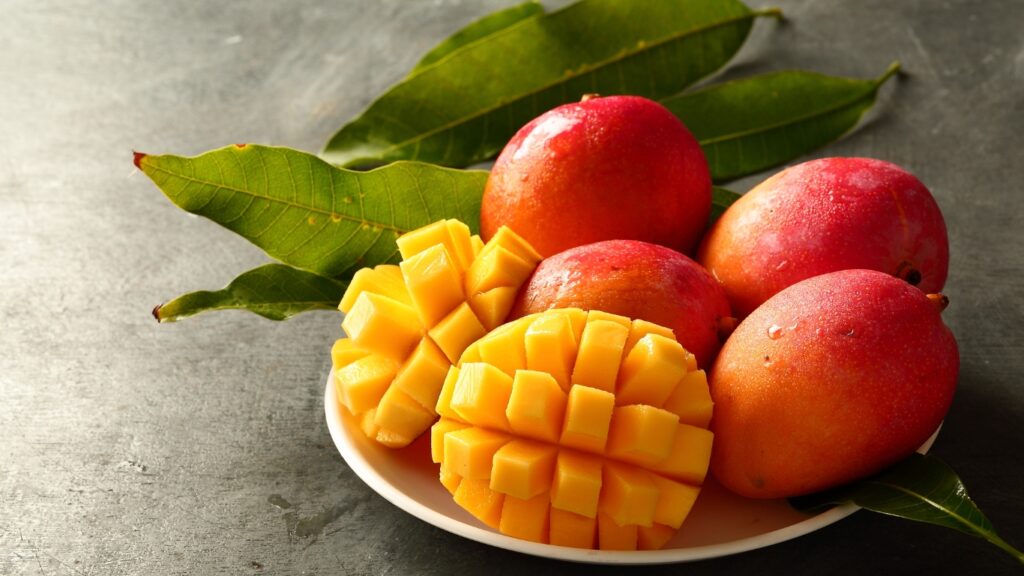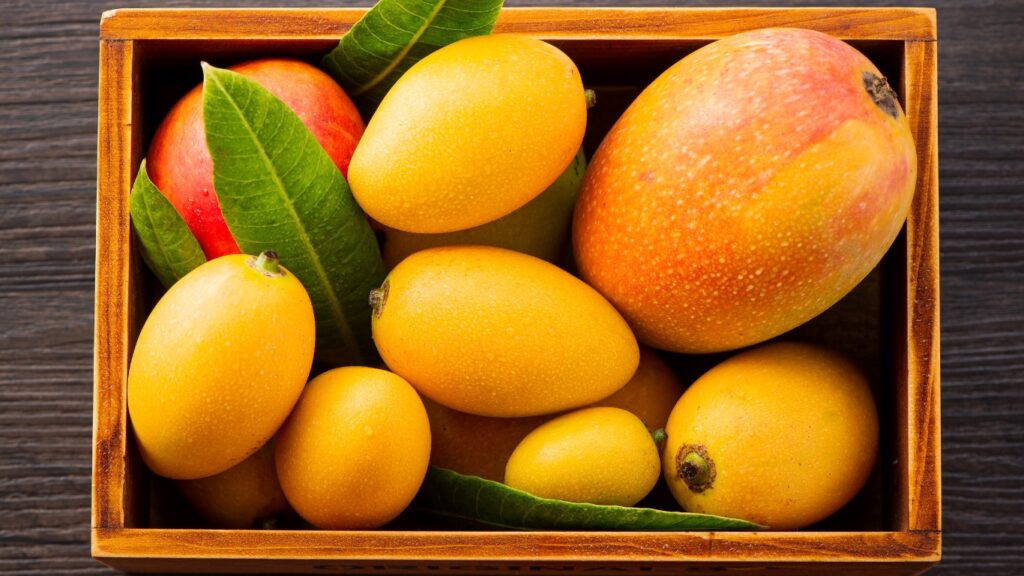- Home
- Culture & Community
- Incredible India
- Mango of India
Mango – India’s Golden Gift to the World
f there’s one fruit that unites India across language, region, and season—it’s the mango. Fondly called the “King of Fruits,” the mango is not just a sweet, juicy treat but a timeless emblem of India’s heritage, love for nature, and deep-rooted culinary traditions. For centuries, it has inspired poets, been offered in royal courts, and painted into the stories of India’s summers.
India is the largest producer and consumer of mangoes in the world, and the fruit holds a prominent place not just in kitchens but in festivals, Ayurveda, and even religious rituals. Mango leaves are considered sacred in Hindu traditions and are used to adorn entrances during auspicious occasions.
But what makes the Indian mango so special? It’s the incredible diversity of varieties, each with its unique texture, aroma, and taste—reflecting the soils and climates of different regions.

Regional Gems: Famous Mango Varieties Across Indian States
Alphonso (Hapus) – Maharashtra
Known as the finest mango in the world, Alphonso is prized for its saffron-yellow flesh, rich aroma, and smooth, non-fibrous texture.
It is often exported and used in premium desserts, juices, and sweets.
Dasheri – Uttar Pradesh
Sweet, fragrant, and juicy, this variety from Malihabad is a household favorite in North India.
Traditionally enjoyed by sucking the pulp straight from the fruit after chilling it.
Langra – Bihar & Uttar Pradesh
A green-skinned mango with a strong aroma and fibrous flesh, Langra is great for slicing and eating with salt and chili.
Kesar – Gujarat
Grown near the Gir forest, this mango is bright orange, small, and extremely sweet. It’s often used in making aamras (mango pulp) and shrikhand.
Himsagar – West Bengal
A lesser-known jewel, Himsagar is juicy and aromatic, with no fiber and a rich, creamy taste.
Banganapalli – Andhra Pradesh
Large, firm-fleshed mangoes with a balanced sweet-tart flavor, popular in southern India.
Totapuri – Karnataka & Tamil Nadu
Shaped like a parrot’s beak, this tangy variety is often used for pickles and mango-based drinks.
Neelam – Tamil Nadu
Available later in the season, Neelam is known for its longer shelf life and mild sweetness.
Chausa – Punjab & Haryana
Highly juicy and fibrous, Chausa is best enjoyed by squeezing the fruit directly into the mouth.

Mango, often referred to as the “King of Fruits,” is a powerhouse of nutrition and flavor. It is rich in vitamins A, C, and E, along with essential minerals like potassium, magnesium, and copper. The fruit also contains beneficial antioxidants such as mangiferin, quercetin, and beta-carotene, which help fight free radicals and support immunity, skin health, and eye function. Thanks to its natural enzymes, mango also aids digestion and provides a good amount of dietary fiber, making it an excellent fruit for maintaining gut health. In the summer, its hydrating and energy-boosting qualities make it a favorite among all age groups.
Ayurvedic Importance of Mango: The Sweet Fruit of Balance
In Ayurveda, mango is known as “Amra” and is considered a fruit that brings both nourishment and therapeutic value. According to classical Ayurvedic texts, ripe mangoes are sweet (madhura rasa), slightly warming (ushna virya), and anabolic (balya)—which means they help in building strength and enhancing immunity.
For Vata & Pitta
Ripe mangoes pacify Vata and Pitta doshas due to their sweetness and unctuousness. They are especially beneficial during summer, a time when Pitta aggravation is common. Mango’s cooling, hydrating, and soothing qualities balance the heat within the body.
For Digestion
Ayurveda recommends consuming mangoes in moderation and with digestive spices like cardamom (elaichi), saffron (kesar), or even black salt (kala namak), especially if eating them raw or in large quantities. This prevents bloating or heaviness and aids in digestion.
Raw Mango in Ayurveda
Raw mangoes (Kaccha Aam) are considered sour and astringent in taste, increasing Pitta and Vata. That’s why they’re commonly combined with cooling herbs (like mint), jaggery, or cumin when made into aam panna—a traditional summer drink that detoxifies the liver, supports digestion, and prevents heatstroke.
Therapeutic Benefits
Acts as a natural energizer and immunity booster.
Promotes skin health and radiance due to its high antioxidant content.
Aids in iron absorption and blood production—especially helpful for women.
Strengthens heart tissue and improves vitality.
As per Ayurvedic practice, mangoes should ideally be eaten as a fruit alone, not with milk or heavy meals, to avoid indigestion or toxic buildup (Ama). Drinking warm water after mango consumption helps support digestion.

Traditional Ways of Enjoying Mango in India
Raw Mango (Kaccha Aam): Used to make pickles, chutneys, and drinks like aam panna.
Ripe Mango: Peeled and sliced or eaten by hand, mangoes are often served as dessert or breakfast during the summer.
Aamras: A puree of ripe mango, often served with puris in Gujarat and Maharashtra.
Sucked Whole: A child’s favorite way—massaging the mango to soften it, snipping off the tip, and drinking the pulp directly.
With Spices: Mango slices sprinkled with salt and chili powder—simple and unforgettable.
Preserved: Turned into mango papad, jams, or dried slices for year-round enjoyment.
Final Thought: A Fruit That Connects Culture, Health, and Joy
The mango is more than just a fruit—it’s an experience, a tradition, and a timeless companion to Indian summers. Whether relished raw with a sprinkle of salt, sipped as a chilled aam panna, or served as a sweet mango lassi, it brings families together and revives body and spirit in the heat of the season.
Rooted deeply in Ayurveda, mango reminds us of the power of seasonal eating and natural healing. Its nutritional richness and therapeutic value make it not only a treat for the taste buds but also a tonic for wellness. In a world moving fast, mangoes invite us to slow down, savor nature’s gifts, and reconnect with the wisdom of our roots.
So this summer, whether you’re in India or enjoying mangoes abroad—take a moment to enjoy this golden fruit, and let its sweetness nourish you from within.




